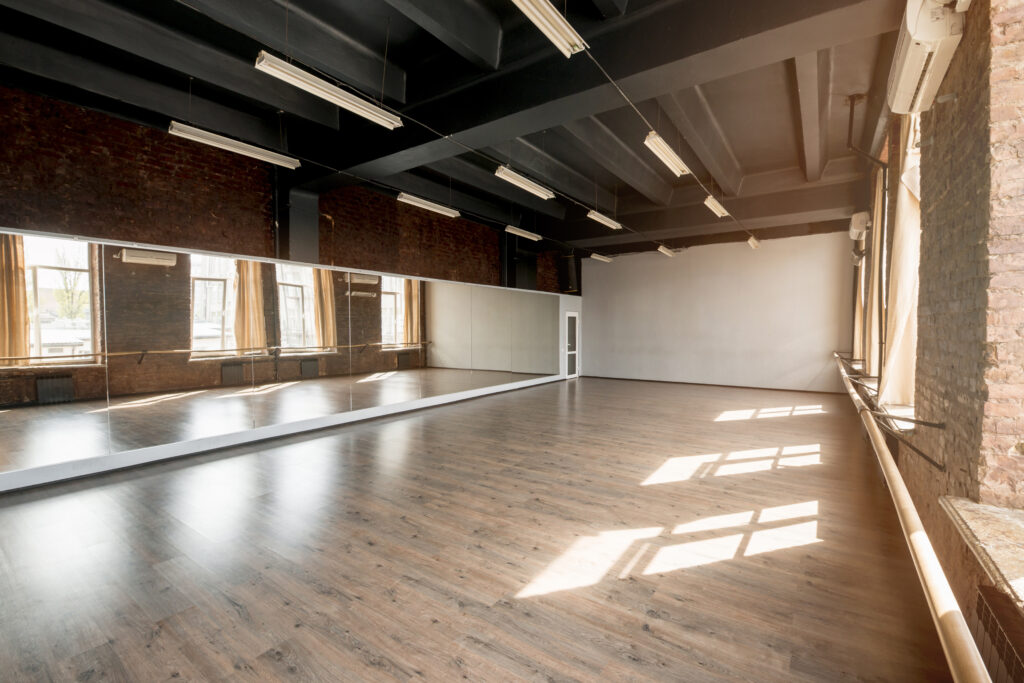Business Planning & Strategy, Financial Models
Dance Academy Business: Costs, Revenue Potential & Profitability
A dance academy operates in a recurring revenue service model where profitability hinges on studio utilization, instructor productivity, and retention of high-LTV students. While CapEx is moderate, margins depend on class scheduling discipline, package pricing strategy, and extracurricular monetization such as performances and workshops.
Asset Configuration
CapEx is relatively contained, focused on building out mirrored studios, sprung floors, sound systems, and student amenities. A typical academy includes 2 to 4 studios in a 1,500 to 4,000 sq. ft. facility.
| Asset Category | Cost Range (USD) | Notes |
|---|---|---|
| Studio Buildout (floors, mirrors) | 40,000 to 80,000 | Sprung floors, mirrors, ballet barres, ventilation |
| Sound Systems and Lighting | 10,000 to 20,000 | Studio-grade speakers, spotlights for performance areas |
| Reception, Waiting, Changing Areas | 10,000 to 20,000 | Front desk, benches, lockers |
| POS, Scheduling, CRM Software | 5,000 to 10,000 | Class booking, student billing, attendance tracking |
| Equipment and Initial Marketing | 5,000 to 10,000 | Uniform samples, website, signage |
Total CapEx: 70,000 to 140,000 USD, with layout and finishing quality impacting both pricing power and parent experience.
Revenue Model
Revenue is primarily subscription-based, with students enrolled in multi-week packages or monthly memberships. Additional income comes from private lessons, costume fees, recitals, merchandise, and seasonal intensives or camps.
Annual Revenue Potential for a Mid-Sized Dance Academy (250 Students)
| Revenue Stream | Volume Assumption | Annual Revenue (USD) |
|---|---|---|
| Group Classes (avg. $110/month) | 250 students, 10 months/year | 275,000 |
| Private Lessons | 40 students at 1 session/week, $60/session | 124,800 |
| Recital Participation & Tickets | 2 shows/year, $150 per student avg. | 75,000 |
| Uniforms and Costumes | 200 purchases at $100 avg. | 20,000 |
| Workshops, Camps, Intensives | $2,000 per month avg. | 24,000 |
| Merchandise and Studio Retail | $500/week avg. | 26,000 |
| Total | 544,800 |
Well-run academies with strong brand presence and seasonal programming can exceed 700,000 USD/year. Small academies with limited space or inconsistent programming often operate below 250,000 USD/year.
Operating Costs
Labor is the largest cost driver, especially if instructors are salaried or compensated per class. Rent and utilities are also significant. Marketing, costume sourcing, and recital production require seasonal planning.
| Cost Category | Annual Cost Range (USD) |
|---|---|
| Instructor Wages and Payroll | 180,000 to 220,000 |
| Rent, Utilities, Insurance | 120,000 to 150,000 |
| Costume Procurement and Recital Costs | 35,000 to 50,000 |
| Marketing, Community Outreach | 25,000 to 35,000 |
| Booking, CRM, Payment Software | 15,000 to 20,000 |
| Cleaning, Maintenance, Supplies | 10,000 to 15,000 |
| Total Operating Costs | 385,000 to 490,000 |
EBITDA = 544,800 – 385,000 to 490,000 = 54,800 to 159,800 USD
EBITDA Margin = 10.1% to 29.3%
Well-utilized studios with strong retention, instructor efficiency, and seasonal monetization can maintain EBITDA margins above 20 percent. Academies with idle capacity or high turnover often fall below 15 percent.
Profitability Strategies
Profitability in a dance academy depends on schedule density, upsell depth, and retention.
First, maximize studio utilization. Target 85 percent+ prime-hour occupancy across weekdays (4 PM to 9 PM) and weekends. Use staggered scheduling, multi-age programming, and rotating disciplines (ballet, jazz, hip-hop) to broaden demand. Aim for minimum 3.5 average classes per student per week to increase yield per registration.
Second, reduce class drop-off through tiered packages and family discounts. Offer auto-renewal pricing, long-term prepayment incentives, and a well-structured trial funnel to limit churn.
Third, treat recitals and performances as profit centers, not cost centers. Charge costume fees and tickets at a premium, while maintaining parent satisfaction through seamless execution. Recitals should account for 10 to 15 percent of total annual profit.
Fourth, cross-monetize through private lessons, camps, and intensives, especially during low-demand months. Leverage studio downtime for birthday rentals or corporate bookings to capture incremental revenue.
Lastly, implement CRM systems that automate attendance tracking, billing, renewal reminders, and feedback capture. These systems reduce admin overhead and enhance parent experience, which directly impacts student retention.
So what?
A dance academy is not a performing arts venue – it is a recurring revenue business with margin tied to studio throughput and student lifecycle value. Profitability depends on maximizing schedule density, monetizing seasonal demand, and minimizing student churn. Operators who combine class capacity control, strong recital economics, and auxiliary service layering can achieve 10 to 29 percent EBITDA margins on over 500,000 USD in revenue, with CapEx under 150,000 USD.

Are you considering opening your Dance Academy business? Download the comprehensive Dance Academy Business Financial Model Template from SHEETS.MARKET to simplify your financial planning. This tool will help you forecast costs, revenue, and potential profits, making securing funding and planning for success for your Dance Academy business easier.



